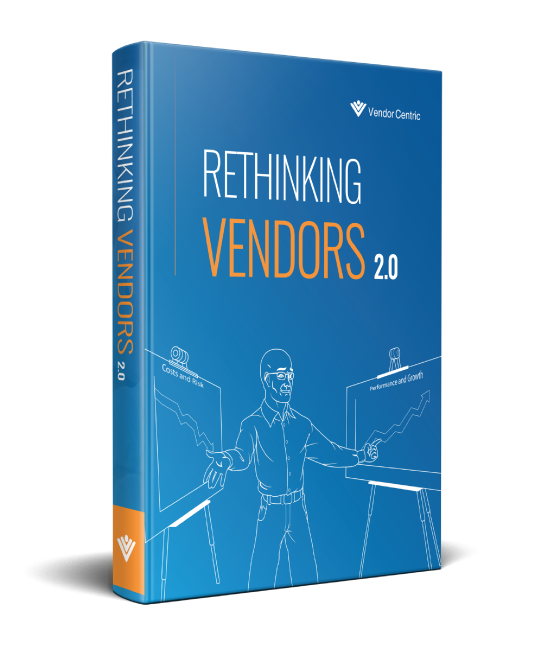Getting funding for a vendor management project can feel like an uphill battle. You’re competing with countless other departments, each with their own strategic priorities and urgent needs. But here’s the good news: vendor management initiatives often deliver measurable ROI — in cost savings, risk reduction, compliance improvements, and operational efficiency. The key is presenting your initiative in a way that makes decision-makers want to say yes.
In this blog, we’ll walk through practical steps for building a compelling business case that helps you get the green light (and the budget) for your vendor management project.
Start with the "Why": Define the Business Problem or Opportunity
A successful business case begins with a compelling reason for action. You need to clearly define the problem you’re trying to solve or the opportunity you’re aiming to capture. This sets the stage for everything that follows, helping leadership understand why this initiative matters now.
- Is your organization overspending due to fragmented vendor oversight?
- Are you exposed to audit findings or compliance risk because third-party due diligence is inconsistent or lacking?
- Are internal stakeholders frustrated by slow onboarding or problems with vendor performance?
When framing your “why,” anchor it to business pain points that resonate with executives: financial performance, regulatory risk, customer experience, or operational efficiency. A sharp problem statement shows that you understand the issue deeply and are focused on solving something meaningful.
Quantify the Value: Make the ROI Case
Once you’ve defined the problem, shift the focus to the payoff. Executives want to know not just that there’s an issue — but that it’s worth solving. That means showing a clear path to return on investment (ROI).
Vendor management initiatives can deliver substantial value. The key is to make that value tangible. Don’t just say there will be savings or efficiencies — outline how and where they will be realized.
Examples of tangible ROI:
- Cost savings from consolidating vendors or negotiating better contract terms
- Efficiency gains from automated processes or centralized reporting
- Risk reduction through stronger due diligence and ongoing monitoring
- Improved compliance that reduces audit findings or regulatory penalties
- Alignment with strategic initiatives and enterprise goals such as cost control or digital digital transformation
Where possible, assign tangible goals to those outcomes. Even directional estimates (e.g., “could save $200K annually through contract rationalization” or “reduce onboarding time from 20 days to 5”) help decision-makers weigh the investment.
Also, highlight the cost of inaction. What happens if nothing changes? Sometimes, the risks of maintaining the status quo are just as persuasive as the benefits of moving forward.
Lay Out the Solution: Be Clear and Credible
Now that you’ve framed the problem and shown the value of solving it, you need to explain how. What exactly are you proposing? Avoid jargon or technical details here; instead, focus on clarity and feasibility.
Is this a new vendor management system? A process redesign? A third-party risk program rollout? Spell it out.
Include key elements such as:
- Scope: What is included in the initiative, and what isn’t
- Timeline: Key milestones and realistic implementation dates
- Resources: Staffing, technology, consulting or vendor costs
- Dependencies: Other initiatives or departments that need to be aligned
Presenting your solution with this level of specificity reassures decision-makers that you’ve thought it through and that it’s achievable. Overly vague or overly ambitious proposals tend to raise red flags.
Address the Investment: Be Transparent About Costs
Transparency around costs builds credibility. Executives know that every project comes with a price tag — what they want is a clear and honest picture of what they’re funding.
Break down your proposed investment:
- Technology/platform fees (initial and ongoing)
- Internal resource time or additional headcount
- External services or consulting support
If you plan to use a consultant, this is where you should articulate the value they bring. A skilled consultant can accelerate implementation, avoid common pitfalls, and contribute specialized knowledge your internal team may not have. They also provide an objective perspective, helping ensure your program is set up for success. When leaders understand that external expertise will reduce risk and speed up results, they’re more likely to see it as a smart investment rather than an added cost.
Build Stakeholder Support Early
Rarely does funding hinge on a single decision-maker. More often, it depends on the voices in the room when priorities are discussed. That’s why stakeholder engagement is critical.
Start by identifying who will be impacted by or have influence over your initiative. Then, engage them early:
- Share your thinking and ask for input
- Incorporate their feedback into your proposal
- Identify champions who will advocate alongside you
This collaborative approach not only strengthens your business case but also reduces resistance down the road. A well-supported initiative is much more likely to get funded — and succeed in execution.
Tell a Clear Story: How to Present the Case
How you present your business case is just as important as what it contains. Your goal is to tell a story that captures attention, makes sense, and builds trust.
Use whatever format is standard in your organization — a slide deck, one-pager, or executive memo — but be sure it includes:
- A compelling opening that frames the business need
- Clear, concise explanation of your proposed solution
- Quantified benefits and transparent costs [and/or avoidance of potential problems or costs]
- Strategic alignment and stakeholder input
- A call to action or recommended next steps
Decision-makers are often weighing multiple priorities at once. The clearer and more cohesive your story, the easier it is for them to see the value and say yes. Focus on relevance, results, and realism — and make it easy for leadership to take the next step.
Final Thoughts: It’s About Value, Not Just Cost
Securing funding for vendor management initiatives requires more than a solid idea. It takes a clear, compelling business case that connects to real business needs and demonstrates tangible value.
When you focus on solving critical problems, align with strategic priorities, and clearly outline both the investment and the return, you’re far more likely to gain support. And once your project is funded, you’ll be in a strong position to deliver meaningful, measurable impact.




















 Tom is a trusted advisor on procurement and third-party management to organizations across the United States. Having worked with over 120 organizations over his 30-year career, he has a unique ability to bring creativity and discipline to finding solutions for even the most complex challenges his clients face.
Tom is a trusted advisor on procurement and third-party management to organizations across the United States. Having worked with over 120 organizations over his 30-year career, he has a unique ability to bring creativity and discipline to finding solutions for even the most complex challenges his clients face.



